
Fri 21 / 10 / 16
Mini-guide to high growth
However fast you’re growing, press the pause button now. This mini-guide to high growth will keep you on track.
Photo by Liz Finlayson/Vervate
If your company is growing fast, it’s exciting – but it can also be a mad scramble.
So it’s important to do what you’re least likely to do: stop, take stock and think strategically.
The Brighton and Hove Chamber of Commerce’s ‘High rise debate on high growth’ did just that. Sponsored by Barclays at the i360, it gave the panel and audience, a chance to explore the things that will keep them on that high-growth curve: staff, systems, culture and funding.
First stop: your people and your purpose.
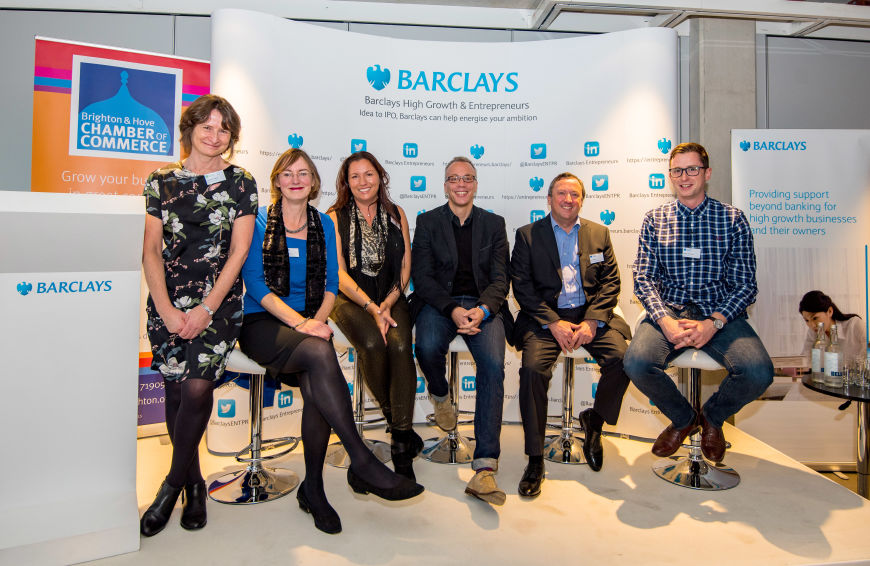
Sarah Springford, Chamber director and Chair Miranda Birch with the panel: Nikki Gatenby, MD of Propellernet; Richard Heggie, Head of High Growth & Entrepreneurs Proposition at Barclays; Paul Feist, Joint founder and MD of Plus Accounting and James Dempster, MD of Cobb Digital.
Congratulations! You’re recruiting.
But how do you know whether your new team members will do your company justice?
As James Dempster, MD of Cobb Digital and one of the panellists, pointed out: “Employing the right people is really, really important, particularly amongst your sales team. They have to live and breathe your company’s ethics, because if they are going off and promising things that they can’t deliver, that is no good. Equally, if they don’t understand what your business is about, and are promoting that in a wider market, that is no good either.”’
Richard Heggie, another panellist, is Head of the High Growth and Entrepreneurs Proposition at Barclays. He agrees that maintaining your culture is a challenge when your team is expanding at speed:
“A lot of people tell me that growing a team to 25 is one thing; but if you’re trying to grow to 150, that is completely different.
“This plays into the culture issue: how do you keep your company’s values? At some point you can’t control them. So how do you create a way in which those values are lived beyond your ability to stay in control? How do you give your company that identity, instilling it in the staff as you grow your teams?”
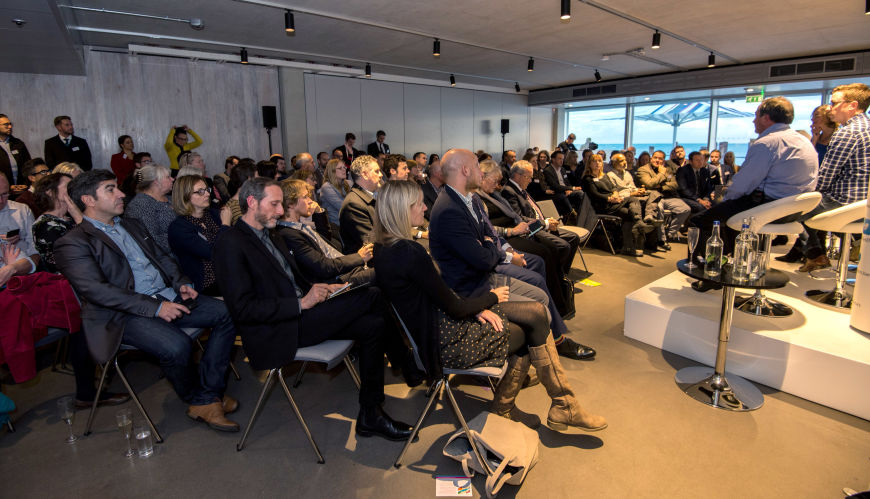
Photo by Liz Finlayson/Vervate
Know what you’re about.
Nikki Gatenby, the third panellist, is Managing Director of Propellernet, a digital marketing consultancy. She knows a thing or two about creating a thriving culture. For the last four years Propellernet has been ranked within the top 10 Best Places to Work in the UK. This has not happened by happy coincidence:
“You need have a strong ethos and culture to start with. You need to stand for something to be able to maintain it.
“What do you stand for, beyond profit and growth – which are great goals – but what purpose do you serve? Why would people be attracted to want to work with you? Because that attraction will help you to scale and grow.
“If people know what they are signing up for and are excited by it, then you will minimise the challenges of maintaining your ethos and culture, because you have embedded it from the beginning.”
‘Yes!’ I hear you cry, ‘but how do we embed it? We’re growing so fast, we’ve got 101 things to think about. Won’t telepathy work?’
Well, no. You need to overt and upfront about what you believe in. Back to Nikki:
“As a company, our purpose is making life better – for our clients, so they get better results; for their customers online, so they can find what they want. We also treat our team really well and make life better for them. And we make life better in the community, working with Brighton and Hove Housing Association.
“When we recruit people we ask them how they feel about ‘making life better’. We also ask them about values. Our values are innovation, creativity, and adventure. And I say to people, ‘Show me your sense of creativity’ and ‘Where is your spirit of adventure?’
“If you see their eyes lighting up when you ask those questions, you know they will be aligned to start with. If you see fear or alarm bells, they are not right in the first place.
“To grow, you’ve got to qualify people in or out in the first place. The days of worker bees, coming in between nine and six and generating profit for a handful of people to get rich, are long gone.”
Next stop: your processes. Don’t neglect the basics.
Since 2012 Propellernet has grown steadily, 20% year on year. Its team has increased from 15 to 50 people during that time.
Compare that to James Dempster’s experience of business growth. Thanks to Cobb Digital’s merger with Leapfrogg, another well-established agency, his team doubled overnight. Literally:
“Leapfrogg wanted to go in a different direction. So they are now focusing on customer insight and strategy and not doing the kind of digital delivery that they were. So Cobb Digital acquired six of their staff and the existing client base came with them as well. At the time I only had seven staff so, overnight, from 31st of August to the 1st of September, we doubled effectively.”
When you have a growth spurt like this, it’s tempting to sit back for a while and, well, just enjoy it. That’s understandable. But try not to sit back for too long. James:
“Often people celebrate the wins. With the recent merger with Leapfrogg, effectively doubling in size revenue-wise overnight, it would have been easy to stop looking at our own pipeline. But throughout, we have maintained the processes of our own marketing and making sure the hopper of leads is filling up.
“This is important, especially if you are in a competitive area, like digital marketing in Brighton. There are so many of us. If you stop filling the top of your funnel, the bottom will quickly dry up.
“You need to understand your selling cycle and the buying cycle of the companies you’re selling into. We work with companies where it takes a good year or so before people make a purchase. So you need to have a whole year of leads that you are nurturing and keeping warm, to make sure you get new business at the end of it all.”
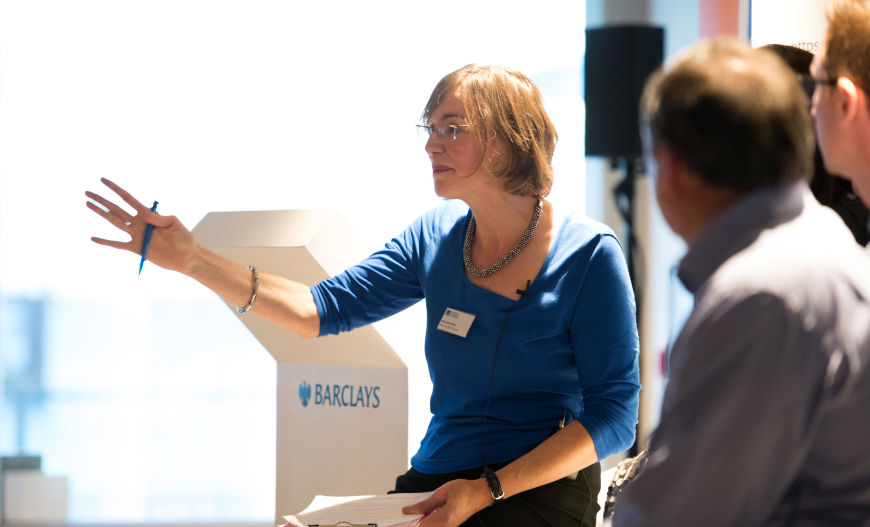
Photo by Liz Finlayson/Vervate
Final stop: funding. Where on earth do you start?
While Cobb Digital’s recent growth happened organically, many other companies have to apply for funding to feed their expansion. And as Barclay’s Richard Heggie points out, getting the right type of funding at the right time is crucial:
“Which stage of funding is your biggest challenge? It is not as simple as, ‘my bank won’t give me a loan to start my business’. It’s, do you find the challenge at Series A or Series B level? Is it equity investment or more innovative venture debt that you need?
“Many companies don’t understand the right type of funding for the right stage of development. I see people coming and asking for bank debt when bank debt is not the right type of funding for their particular stage of growth. So we see our role as connecting you to the right type of funders, who might be able to help you to grow.”
Put the hours in.
As joint founder and Managing Director of Plus Accounting, Paul Feist has years of experience helping successful businesses to expand. As the fourth panellist, he described how he worked alongside a client to win £1.8 million worth of funding. The money was provided by 242 separate investors who were marshalled together by one venture capitalist company.
If this is the route you want to take, be prepared to do a lot of homework. Paul:
“You have to prepare very carefully, because your investors are investing in your promises to achieve bigger things. Typically you need to think about a five-year plan. The further you get from Year One, the more speculative it becomes. For instance, you might be taking a business with a turnover of one or 2 million and seeing how they can get to 20 million in five years’ time. That depends on the robustness and the reasonableness of the financial plans.
“With this particular client, the board of investors have appointed an outside adviser, to act as a go-between the company, us and the board of investors. This go-between is effectively holding the company directors accountable for what they say they are going to do.
“So what the investors have done is to give them this money and then say, ‘Right, go and make it happen. You’ve told us what you think you can achieve. We’ve tested your promises and projections. Now we want you to actually fulfil them as best you can’. If they do, great. If they don’t, they will have failed.
“So the go-between’s responsibilities are to the board of investors. And our responsibilities are to ensure the management pack of 15 to 20 pages of data is completed every month and provides the means of monitoring how well the investment is doing.”
Of course, creating a five year plan like this, is done on the assumption that everything in your house is already in order; that all your existing accounting and legal information is up to date and ready for inspection. This is vital for due diligence.
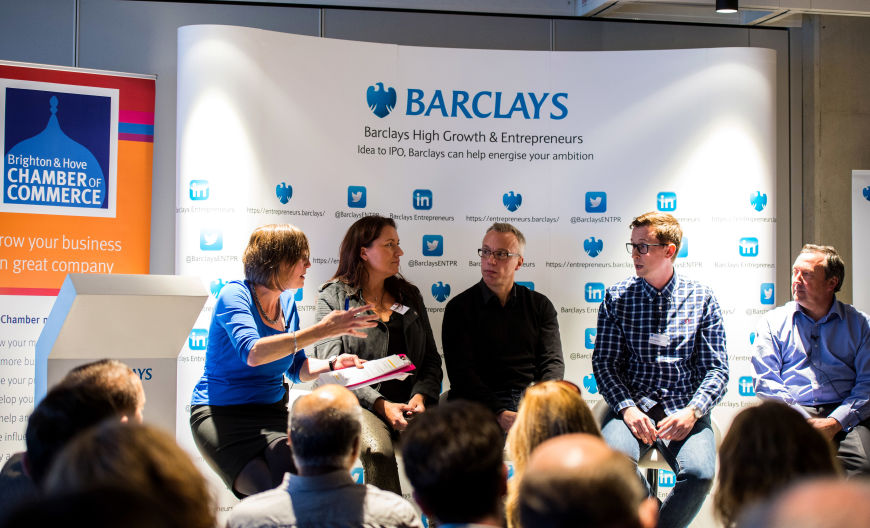
Photo by Liz Finlayson/Vervate
Be confident about your own value.
But, as one member of the audience pointed out, due diligence works both ways. Weze McIntosh is Managing Director of Purepotions, which makes natural products for people prone to dry skin:
“We found investment two years ago. It’s been fantastic. It’s really allowed our company to grow. But, looking back, what I’ve learned is that you need to be really careful to pick the right people. It works both ways. They are doing due diligence on you and you should be able to do the same on them.
“It’s very easy for them to see you as an opportunity to try and make some money and you feel beholden to them – ‘Way-hay, you’ll sort my business out!’ But it’s really important to step back from that. Investigate who that person is and what their contacts are and are those contacts really useful. What experience have they had and what deals have they done in the past?
“Don’t be afraid to see that the opportunity works both ways.”
Paul Feist echoed Weze’s experience: you have to identify investors with right mind set. People who understand what you, and your company, are all about. It comes back to purpose:
“Trying to find a VC who is prepared to invest in something new is not always easy. There are lots of investors around, but trying to find ones who actually take to your idea or people who specialise in your particular sector, is vital. So if you are in tech education, you need find funds interested in investing in this area and so on.
We end where we began: your values and ethos.
As several people pointed out, there’s always the fear that outside investors will change the culture of the company they are buying into – damaging the very things that make that company distinctive and brought it growth in the first place. Vital things, like a clear sense of purpose. Richard Heggie sums up:
“I think everyone on the panel talked a lot about retaining the power in the founder, the entrepreneur – and in that relationship that you have with potential funders.
“Also, maintaining your authenticity and being very clear on what you are trying to achieve. It’s about being selective in who you partner with; being very selective in who you get funded by; make sure they can add value.
“Finally, think about your purpose. Think about the deeper values. The world is changing. People really want to work most with companies that have a purpose.” And if people want to work with you, you’ll continue to grow.
Or, put it another way, Nikki-Gatenby-style:“If you put people and purpose first, the money will come.”
Right. You can take that finger off the pause button now.
As you were.
Happy growing.
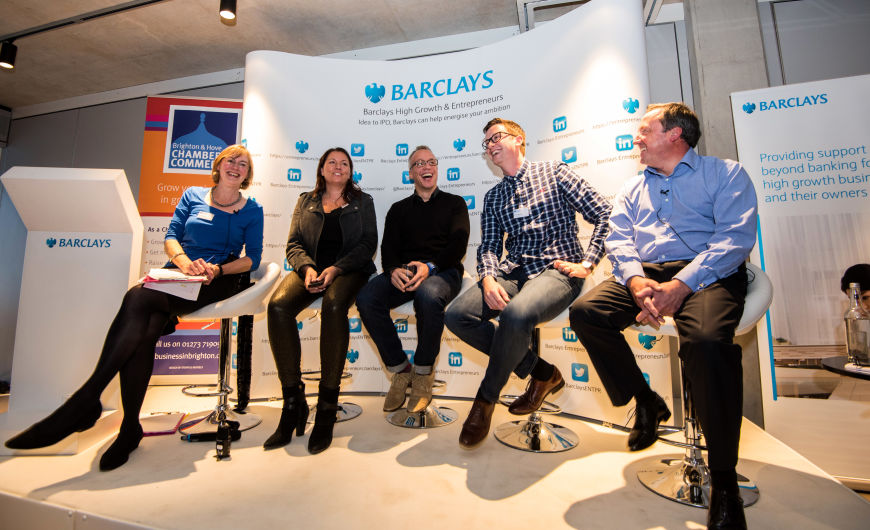
Photo by Liz Finlayson/Vervate
This wonderful blog was written by the Chair of our event, Miranda Birch of Miranda Birch Media. Interviewing business leaders about their purpose, and their progress, is what she does. Find out more on her website.
Thank you to Vervate for taking the photographs at the event.
You might also like:
If you want to contribute to the Chamber blog, contact us on hannah@brightonchamber.co.uk


